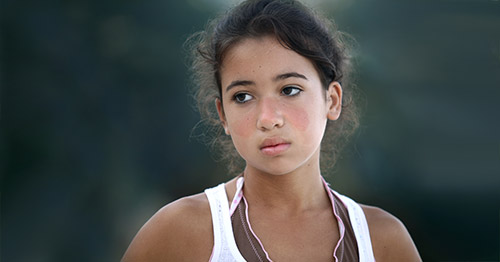Juvenile Lupus (SLE)
Juvenile lupus (also known as juvenile systemic lupus erythematosus or juvenile SLE) is an autoimmune disease in which the body produces antibodies which attack its own cells. This causes inflammation and subsequent damage to multiple organs, including the skin, joints, kidneys, nervous system, heart and lungs.
What causes lupus in children and teenagers?
Though the exact cause of lupus in children or adults is unknown, a combination of genetic predisposition and environmental factors is thought to be the source. Lupus and other autoimmune diseases often run in families, and in susceptible people, sunlight may trigger the disease. Although lupus is more commonly diagnosed in adults, teenagers and (rarely) younger children can develop lupus. In people of all ages, the disease is more common in females but males can be affected. Some children or adolescents who experience only some of the classic signs and symptoms of lupus may actually have mixed connective tissue disease or overlap syndrome instead.
What are the signs and symptoms of lupus in kids?
Lupus can affect each child differently, and the disease can range from very mild to life threatening. Some children become very sick at the first onset of symptoms, while in others, lupus may take years to cause significant symptoms. Rashes, especially on the face, are common in people with lupus, as are systemic symptoms like fever, weight loss, loss of appetite and fatigue. Other symptoms include arthritis, hair loss, sores in the mouth or nose, and swollen lymph nodes.
People with lupus may also have problems in a number of different organs, including the kidneys (lupus nephritis), heart, lungs, blood or brain (known as CNS lupus, meaning “central nervous system” lupus). Symptoms may differ depending on which organ is involved. For example, people with lupus nephritis often having swelling of their feet and legs, while people with CNS lupus may have headaches, brain fog, psychiatric disturbances and seizures.
In some children and adults, lupus can be very severe, or even fatal. If you suspect your child has lupus, it is very important that you bring them to the doctor for a full evaluation.
How do you make a lupus diagnosis in a child?
Because lupus is rare in children, it may take weeks or even months of symptoms before it is diagnosed. A pediatric rheumatologist is the best type of doctor to diagnose lupus in a child. There is no one specific test for lupus. Rather, the diagnosis is made based on a combination of the patient’s symptoms, a physical exam by a doctor, and laboratory findings.
Most people with lupus test positive for certain autoantibodies, which are antibodies the body makes against its own cells. Some people may have these autoantibodies without actually having lupus or another disease. Depending on the child’s symptoms and test results, the physician may order additional tests, including studies of the heart, lungs, kidneys or brain.
How do you treat lupus in children?
There is no cure for lupus, but medications that suppress the immune system can effectively treat the disease. The precise treatment for any child, adolescent or adult lupus depends on how severe the disease is and which organs are affected.
Many people with lupus require steroid medications at the time of diagnosis. But, because steroids have significant side effects, these medications are typically reduced or eliminated as quickly as can be done safely. Most patients with lupus are treated with a medication called hydroxychloroquine (Plaquenil), which is well-tolerated and improves long-term prognosis. Some patients benefit from oral immunosuppressive drugs, while others require intravenous (IV) medication that is given in a hospital or an outpatient facility. Important nonmedical interventions include rest and stress reduction, a well-balanced diet and regular exercise, the use of sunscreen and avoidance of sun exposure.
In the news
Updated: 11/4/2022
Reviewed and updated by Sarah Faith Taber, MD
References
- Lehman T, Taber S, Nuruzzaman F. “Systemic Lupus Erythematosus in Childhood and Adolescence.” Dubois’ Lupus Erythematosus and Related Syndromes pp520-531. Elsevier (2019).
- Lehman T, Nuruzzaman F, Taber S. “Systemic lupus erythematosus: etiology, pathogenesis, clinical manifestations, and management.” Handbook of Systemic Autoimmune Diseases Volume 6: Pediatrics in Systemic Autoimmune Diseases pp173-190. Cambridge, MA: Elsevier (2016).

